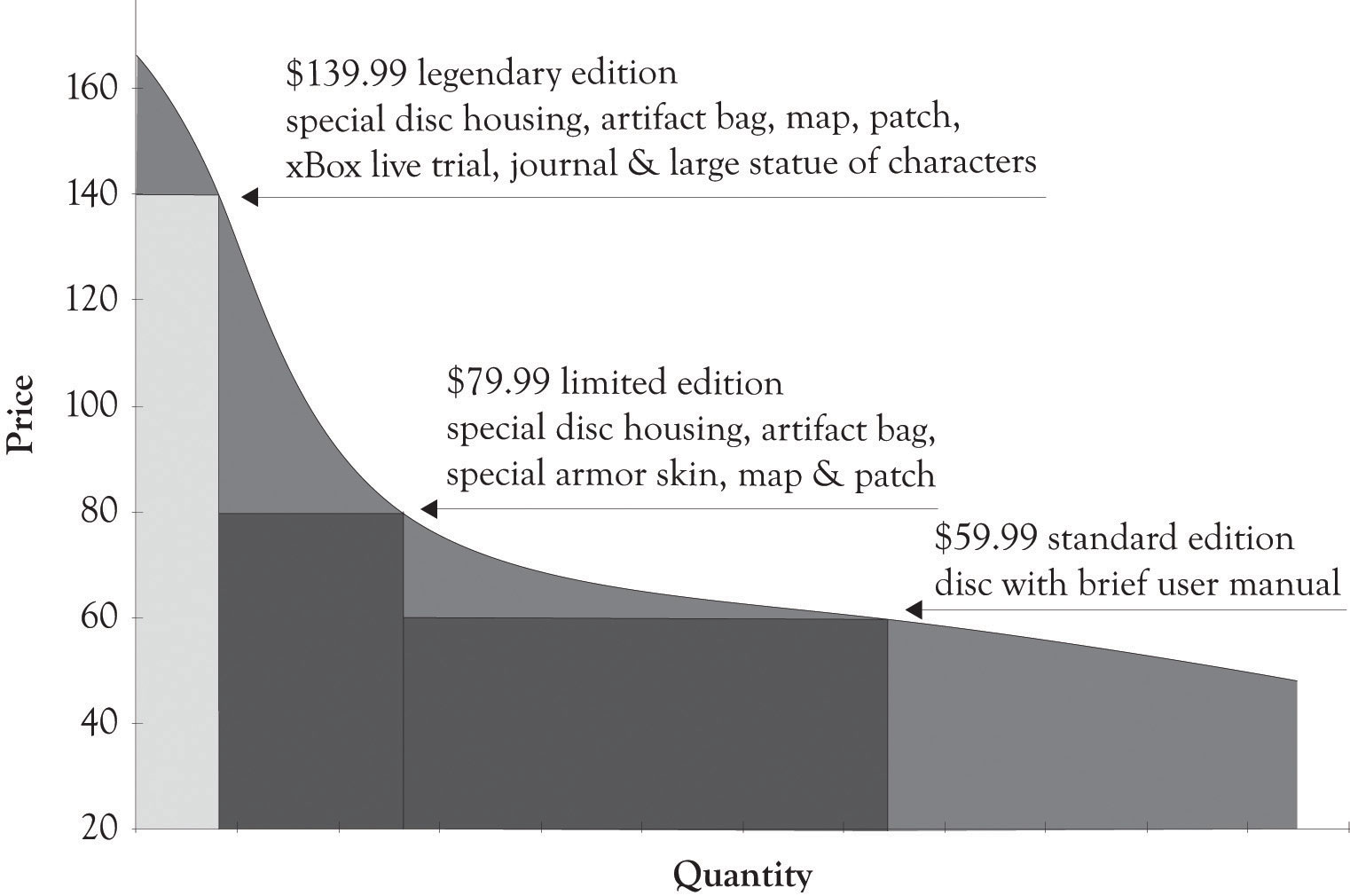The primary characteristic of entertainment and media content is that the fixed costs for development are very high and the variable costs for reproducing digital movies, video game software, television programs, electronic books, and music are very low. The key is to find ways to sell at low price levels for those individuals who are price-sensitive and to capture some of the consumers’ surplus from customers who are price-insensitive. Movies are typically consumed only once and it is important to try to meet demand when there is a lot of hype around the release. In the case of movie releases, this is accomplished by charging more for movies attended in the first 3 or 4 weeks of introduction at theaters, charging less when they are released on pay-per-view, and even less when they are rented on DVD. Consumers who want the movie for a repeat view will pay a price that is usually above the price of attending the movie at a theater.
Video game publishers have found a unique way of differentiating their product on launch day by offering unique packaging and complementary items that are useful to game play and other items that are collectibles. These bundles amplify the consumer’s feelings of game uniqueness, but in reality the game is essentially the same. Microsoft used this strategy when they released Halo Reach. The standard game was sold for $59.99 and essentially just came with a disc and brief manual. The limited edition cost consumers $79.99 and the Legendary edition cost $139.99. They were packaged differently and they also contained supplementary materials, such as journals, unique armor that could be downloaded and worn during battles, and statues of the virtual team members who support the game players during battles. The game was a resounding success, and sales on the first day were estimated to be in excess of $200 million. Soon after the launch, the $139.99 legendary version was discounted to $99.99. This illustrates that even a successful product can be overversioned and overpriced. Consumer behavior on the upper (Midas area) and lower (Hermes area) parts of the demand curve is difficult to predict. There is a large measure of demand uncertainty at the extremes of the demand curve. Consumers expect prices to be in a certain range and when they are not, it is difficult to predict the demand. Figure 5.13 "Product Differentiation for the Halo Reach Game" presents a product differentiation graph for Halo Reach on launch day.
Figure 5.13 Product Differentiation for the Halo Reach Game
